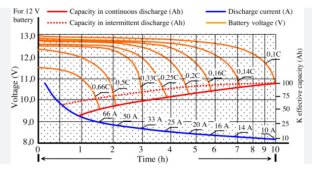Not quite, the effective capacity changes with current. If you have a 200 Ah battery rated at the 20 hour rate, then yes, loading with a 10 amp load will run the battery down in 20 hours.
If the load is reduced to 5 amps the exact same battery is now , in effect a bigger battery, say 220 Ah, so the battery will power a 5 amp load for 44 hours.
The reverse is true if we Increase the load to 20 amps. At this current the battery will have an effective capacity of ,say 180 Ah.
So we do do not get the expected 10 hours , the battery runs down in 9 hours.
( note I have used example values to make the sums easy)
Some lead acid battery makers produce data for different discharge rates, many don't.
The data I have for a deep cycle Trojan battery has the following specification, sold as a 225 Ah battery.
5 hour rate, 185 Ah, 10 hour rate 207 Ah, 20 hour rate 225Ah, 100 hour rate 250 Ah.
So with this battery, a current of 11.25 amps will drain the battery in 20 hours. A lower current of 2.5 amps will run the battery down in 100 hours. If we used the nominal capacity of 225 Ah one would expect only 225/2.5 = 90 hours.
It's all down to the efficiency of the chemical process being related to current flow, the higher the current, the lower the efficiency.
The effect can be computed using Peukerts constant. Very few battery monitors incorporate this in computing battery ' time to go to empty'.
Mike



